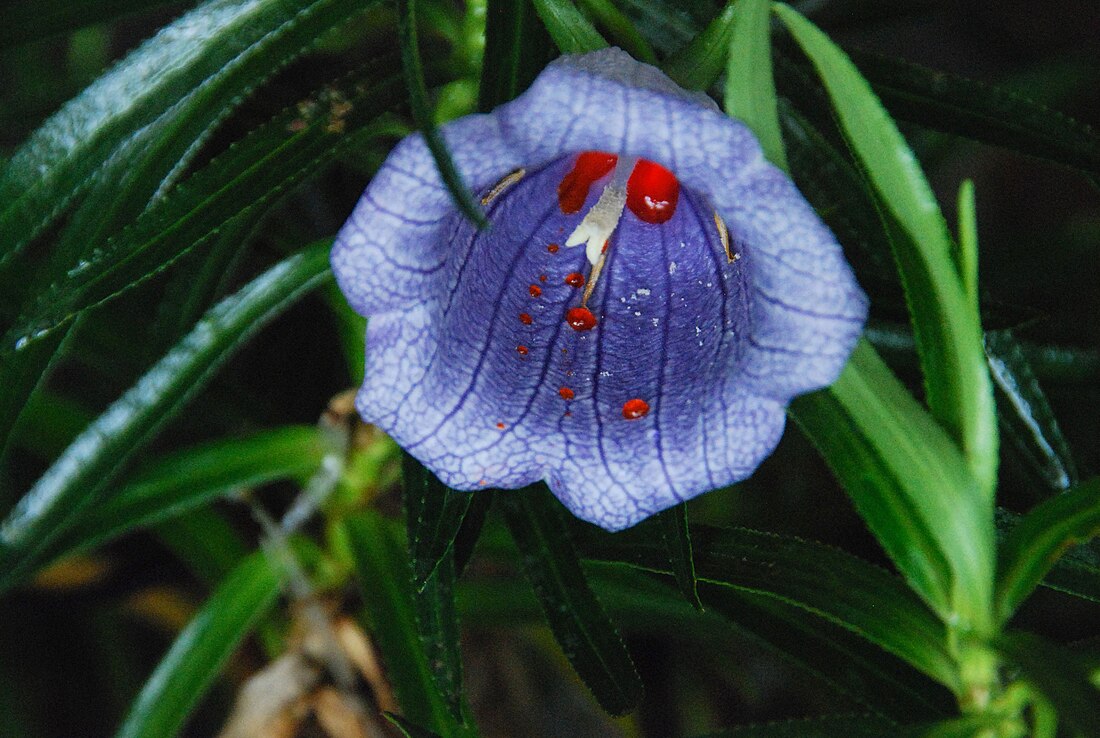Top Qs
Timeline
Chat
Perspective
Nesocodon
Genus of flowering plants From Wikipedia, the free encyclopedia
Remove ads
Nesocodon is a monotypic genus of flowering plants within the family Campanulaceae. The sole species is Nesocodon mauritianus, formerly known as Wahlenbergia mauritiana, which is endemic to the island of Mauritius.
Remove ads
Description
Vegetative characteristics
Nesocodon mauritianus is a 30–40 cm big[2] dwarf shrub[1] with simple, woody,[2] straggly,[3] glabrous stems bearing deep furrows from leaf scars.[2] The spirally arranged,[2] glossy,[3] lanceolate leaves with a serrate margin and an acute apex are 6 cm long, and 0.6 cm wide.[2]
Generative characteristics
The lateral, 1-flowered inflorescence[1] is produced in the leaf axils of the upper leaves.[2]
Remove ads
Taxonomy
It was first described as Wahlenbergia mauritiana I.Richardson by I.Richardson in 1979.[2][4] It was placed into a new monotypic genus Nesocodon Thulin as Nesocodon mauritianus (I.Richardson) Thulin by Mats Thulin in 1980.[1][5] It is closely related to Heterochaenia from the Mascarene Islands, but has single flowers rather than panicles of several.[6]
Ecology
It was the first plant ever discovered to produce red-colored nectar. It was originally thought to have been pollinated by birds, however, recent investigations have demonstrated that day geckos (Phelsuma ornata) are the preferred pollinator of these flowers whereas birds function as nectar thieves.[7] The introduced red-whiskered bulbul (Pycnonotus jocosus) robs it of its nectar.[8]
Conservation
It is a threatened species.[3]
References
Wikiwand - on
Seamless Wikipedia browsing. On steroids.
Remove ads

